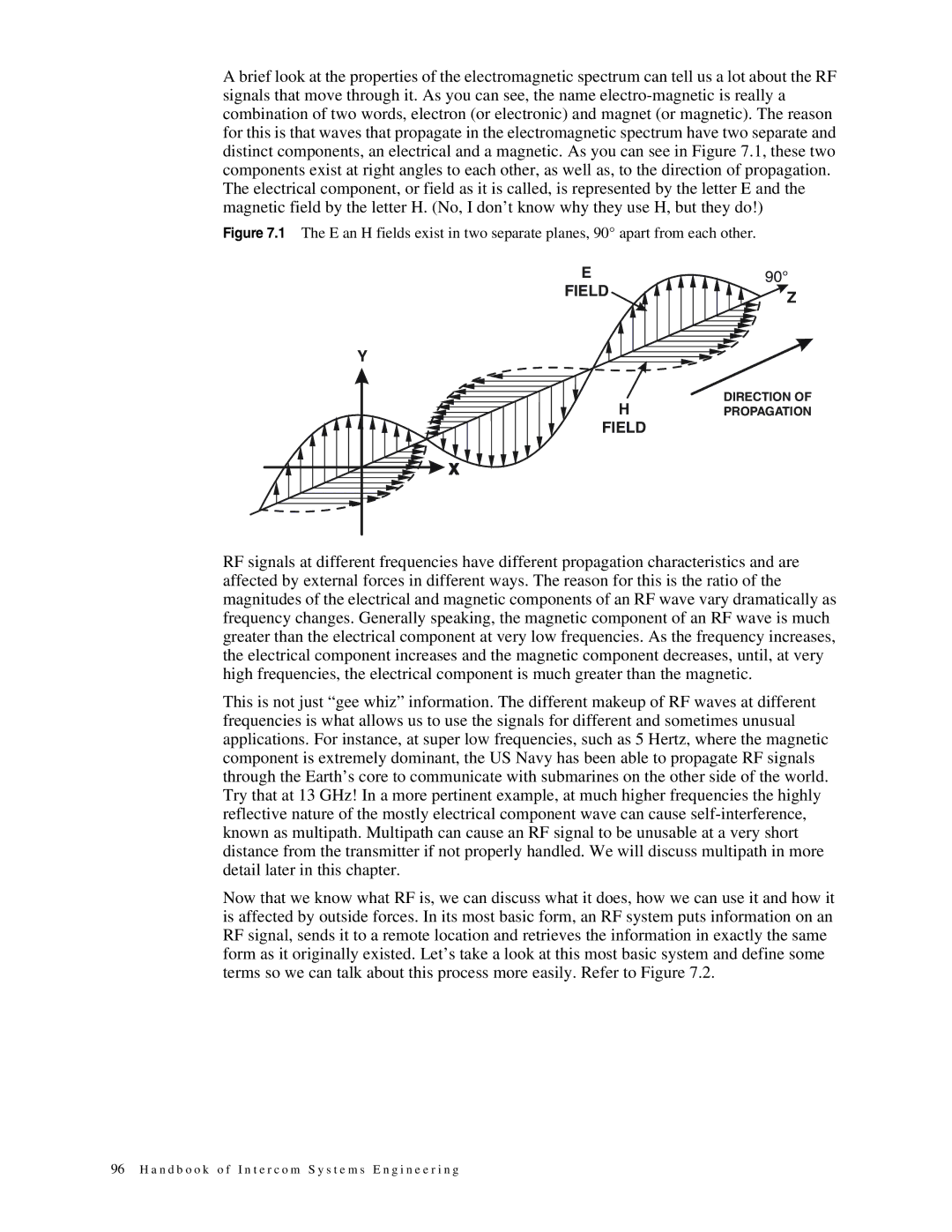
A brief look at the properties of the electromagnetic spectrum can tell us a lot about the RF signals that move through it. As you can see, the name
Figure 7.1 The E an H fields exist in two separate planes, 90° apart from each other.
E
FIELD
90°
Z
Y |
X |
DIRECTION OF
HPROPAGATION
FIELD
RF signals at different frequencies have different propagation characteristics and are affected by external forces in different ways. The reason for this is the ratio of the magnitudes of the electrical and magnetic components of an RF wave vary dramatically as frequency changes. Generally speaking, the magnetic component of an RF wave is much greater than the electrical component at very low frequencies. As the frequency increases, the electrical component increases and the magnetic component decreases, until, at very high frequencies, the electrical component is much greater than the magnetic.
This is not just “gee whiz” information. The different makeup of RF waves at different frequencies is what allows us to use the signals for different and sometimes unusual applications. For instance, at super low frequencies, such as 5 Hertz, where the magnetic component is extremely dominant, the US Navy has been able to propagate RF signals through the Earth’s core to communicate with submarines on the other side of the world. Try that at 13 GHz! In a more pertinent example, at much higher frequencies the highly reflective nature of the mostly electrical component wave can cause
Now that we know what RF is, we can discuss what it does, how we can use it and how it is affected by outside forces. In its most basic form, an RF system puts information on an RF signal, sends it to a remote location and retrieves the information in exactly the same form as it originally existed. Let’s take a look at this most basic system and define some terms so we can talk about this process more easily. Refer to Figure 7.2.
96 H a n d b o o k o f I n t e r c o m S y s t e m s E n g i n e e r i n g
